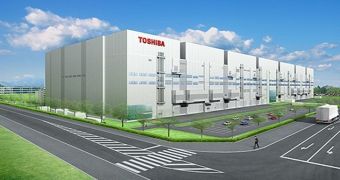Semiconductors come in many types, with different capacities, speeds and purposes, but the most often used sort is NAND Flash by far, and it is that type of chip that SanDisk and Toshiba are now producing in 15nm.
When it comes to semiconductors, the manufacturing process is defined by the width of the smallest “feature” on the chip.
And with the smallest feature usually being the transistor, that means that the thinness of the transistors determines how advanced the manufacturing technology is.
And the more advanced it is, the better the performance and, just as importantly, the energy efficiency becomes.
That's why the latest research and manufacturing milestone from SanDisk and Toshiba is bound to draw attention: because it's nearly the most advanced.
Basically, the pair have revealed that they are now using the 15nm process to make NAND Flash memory chips.
They intend to use 15nm transistors to make new 16 GB chips (128 Gb), of the MLC type (multi-level cell, or 2-bits-per-cell).
Between the new chip and the high speed interface that Toshiba has in mind, the transfer speed should be of 533 Mbps for every chip. That's 1.3 times as fast as 19nm memory modules.
At this point, the only process that can outdo this 15nm node is the 14nm from Globalfoundries, but that one's not ready yet, and hasn't really persuaded the general populace of its viability either.
Toshiba's fab in the Yokkaichi plant in Mie Prefecture near Osaka will produce 15nm NAND modules, and will eventually make 3-bits-per-cell chips as well, for tablets, smartphones and notebook SSDs.
Meanwhile, SanDisk is using a special version of 15nm, the 1Z-nm node, to create NAND memory modules with 2-bits-per-cell and 3-bits-per-cell. Release is scheduled for the second half of the year (2014).
The semiconductor manufacturing company is pretty close to being labeled a circus at the moment, if you can believe it.
First TSMC bowls NVIDIA and AMD over by failing to finalize the 20nm node in time, forcing both companies to redesign their next-generation GPUs for the 28nm process instead (again). Then, it's revealed that Intel might step in to profit from it, and now this.
Intel seems to be the only company never suffering from some sort of setback like this, but that might just be because it's harder for news about yield issues and equipment failures to leak. Intel doesn't have third-party clients after all, it only makes chips for itself. For now anyway. As we've seen, the current CEO wants that to change as soon as possible.

 14 DAY TRIAL //
14 DAY TRIAL //